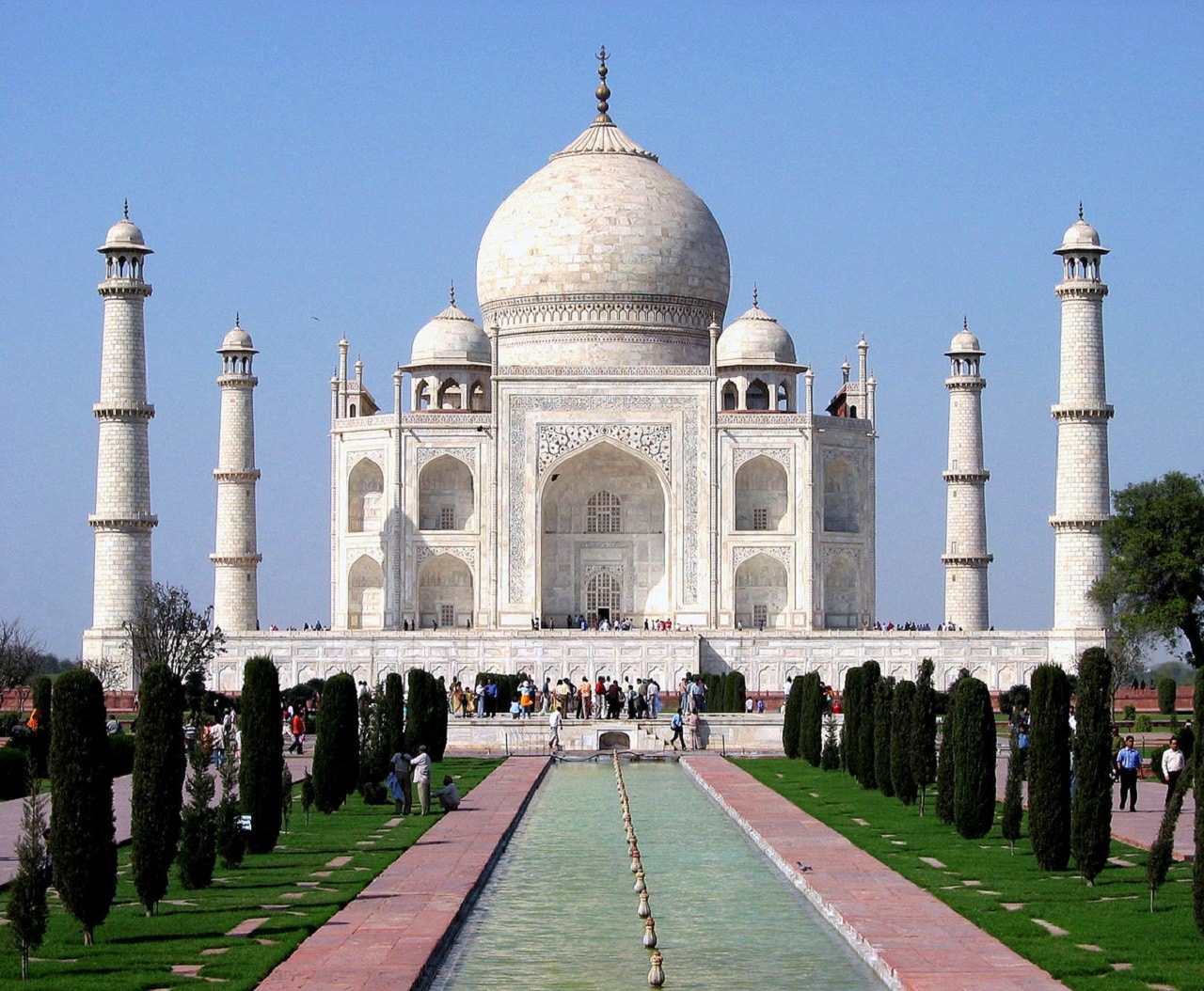
The history of the gastronomy of the India it begins in the mists of time. However, we can establish a legendary moment that places its origin in the instant in which the Himalayan sages discovered spices.
This legend is not trivial, since these condiments have always had a capital importance in Indian cuisine. In fact, they are one of the reasons why it is known around the world and why it is one of the most valued gastronomies on the planet. If you like cooking and want to know more about the history of Indian gastronomy, we invite you to read our article.
History of Indian gastronomy: ritual origin
Indian cuisine, like everywhere else, is the result of the need to prepare dishes that are tasty to diners. But in addition, it probably originated with a ritual purpose, something that distinguishes it from other gastronomies.
The ritual origin
Indeed, Hindu cuisine originally had a sacred character. In the temples dishes were prepared that were offered to the gods as tribute. But, at the time, they served as food for the pilgrims. Hence, many of these attributed healing properties.
In fact, this practice still continues. The food that is offered to the deities is called bhog and it is only made with products extracted directly from nature. You will not find in it processed. It is even heated only with equally naturally occurring media such as tree trunks or coconut shells, no gas or electricity.
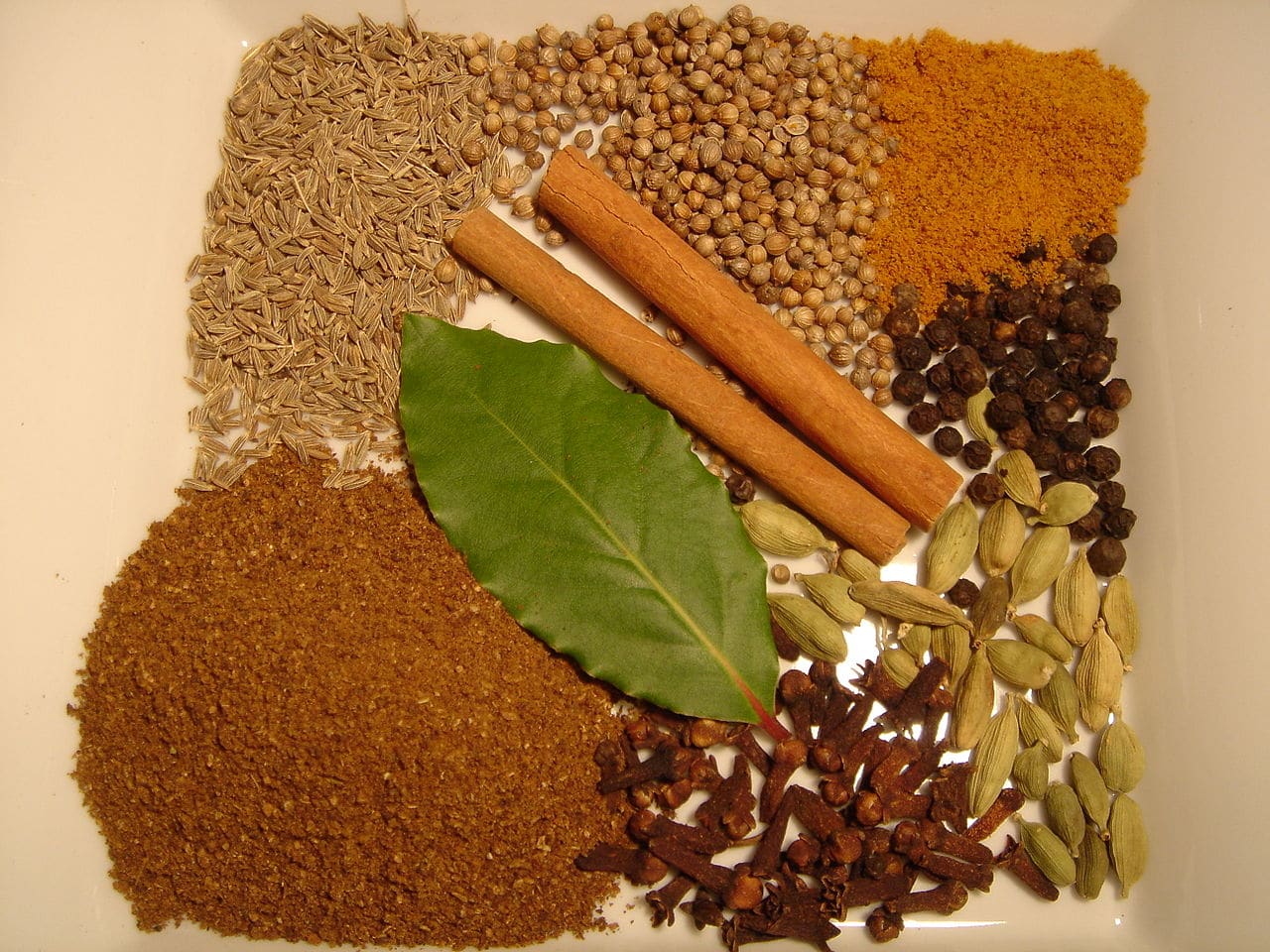
Garam masala spices
So much importance is attached to this practice by the Indians that being a cook in a temple provides great social prestige. And likewise, the charge is hereditary in families. Whoever prepares the dishes must first bathe and clean the kitchen.
On the other hand, each Hindu deity has its associated dish. For example, Ganesha, known for its elephant head, even has its own gastronomic festival. During this, potatoes are prepared with a sauce of yogurt and spices that is given both to men and, precisely, to elephants.
Foreign influence
When India was colonized, its gastronomy received different foreign influences. But it continued to be sacred to Hindus. You can get an idea of it if we tell you that the first food of a baby is covered with a huge ceremony, as if it were your baptism or a wedding.
Among the cuisines that have influenced the gastronomy of India over the centuries are the Portuguese, Muslim, lost and Englishwoman mainly. As a result, Indian gastronomy is characterized by its huge variety of flavors, textures and colors, as well as the great value placed on spices, vegetables and rice.
Spices, essential throughout the history of Indian gastronomy
We have already mentioned throughout this article the importance of spices in Indian cuisine. But it is that they make up its most characteristic feature. Among the most used are turmeric, cumin, ginger, chili, rai or black mustard and coriander. But also turmeric, fenugreek, coriander, saffron and hung or asafoetida plant.
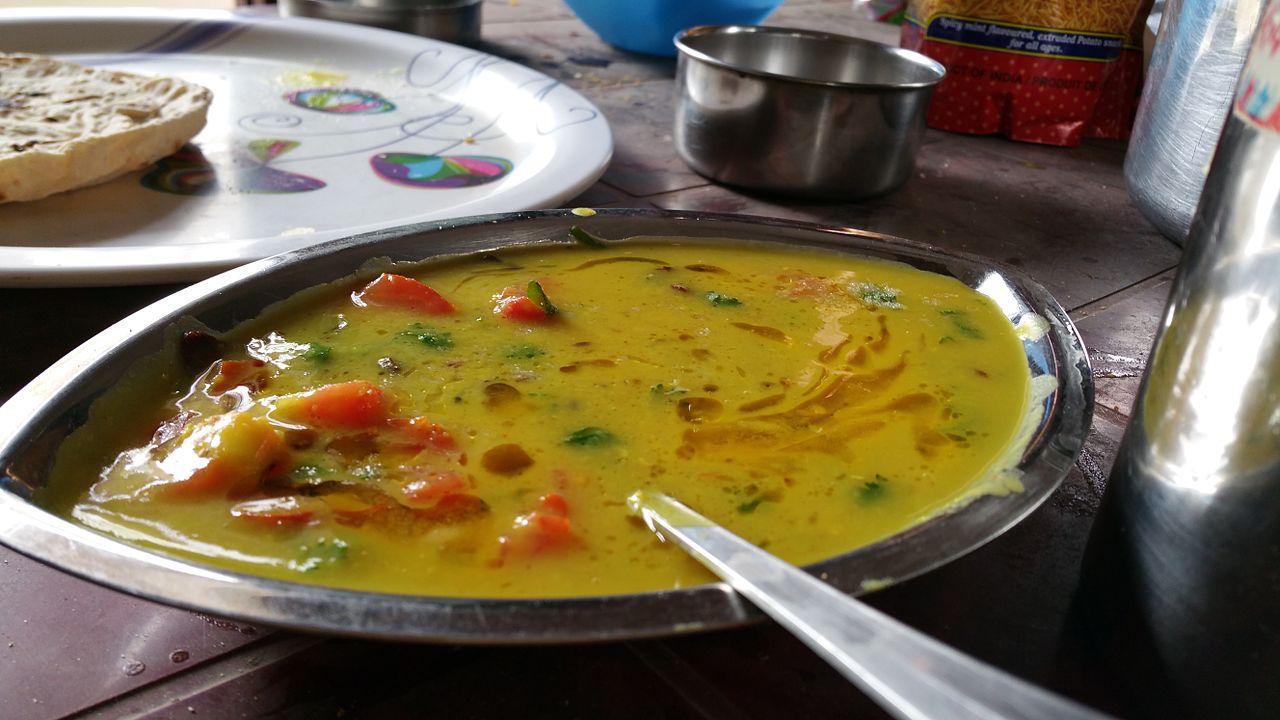
A dal stew
The Indians give so much value to spices that they even make combinations of them. Very famous is the so-called garam masala, which is made up of five. These are typically cinnamon, cloves, nutmeg, black pepper, and cardamom.
But the most popular spice is curry powder, which is made by grinding the curry plant itself together with another great variety of them. They are also made curries in sauce. The best of these is a marinade known as vindaloo and that, curiously, is of Portuguese origin. They are equally famous the saag and madras.
The food protocol in India
We were telling you that Hindus place great value on food. That is why it should not surprise you that they accompany her in everything a ritual. The dishes are served in a single container and its contents are taken with the right hand, specifically with four fingers, since both the index of that hand and the fingers of the left are considered intended for impure acts.
Likewise, if someone gives you food with their hand in India, don't bother. It is a show of respect and hospitality. In the same sense, if you reject the food they give you, you will be showing a very rude and they will be upset.
Some typical dishes of India
The history of the gastronomy of India has left many typical dishes that are now known throughout the world. It would be impossible for us to mention them all to you. Because each area of the huge country has its own. We will be content, therefore, to tell you about some of the most popular and tasty.
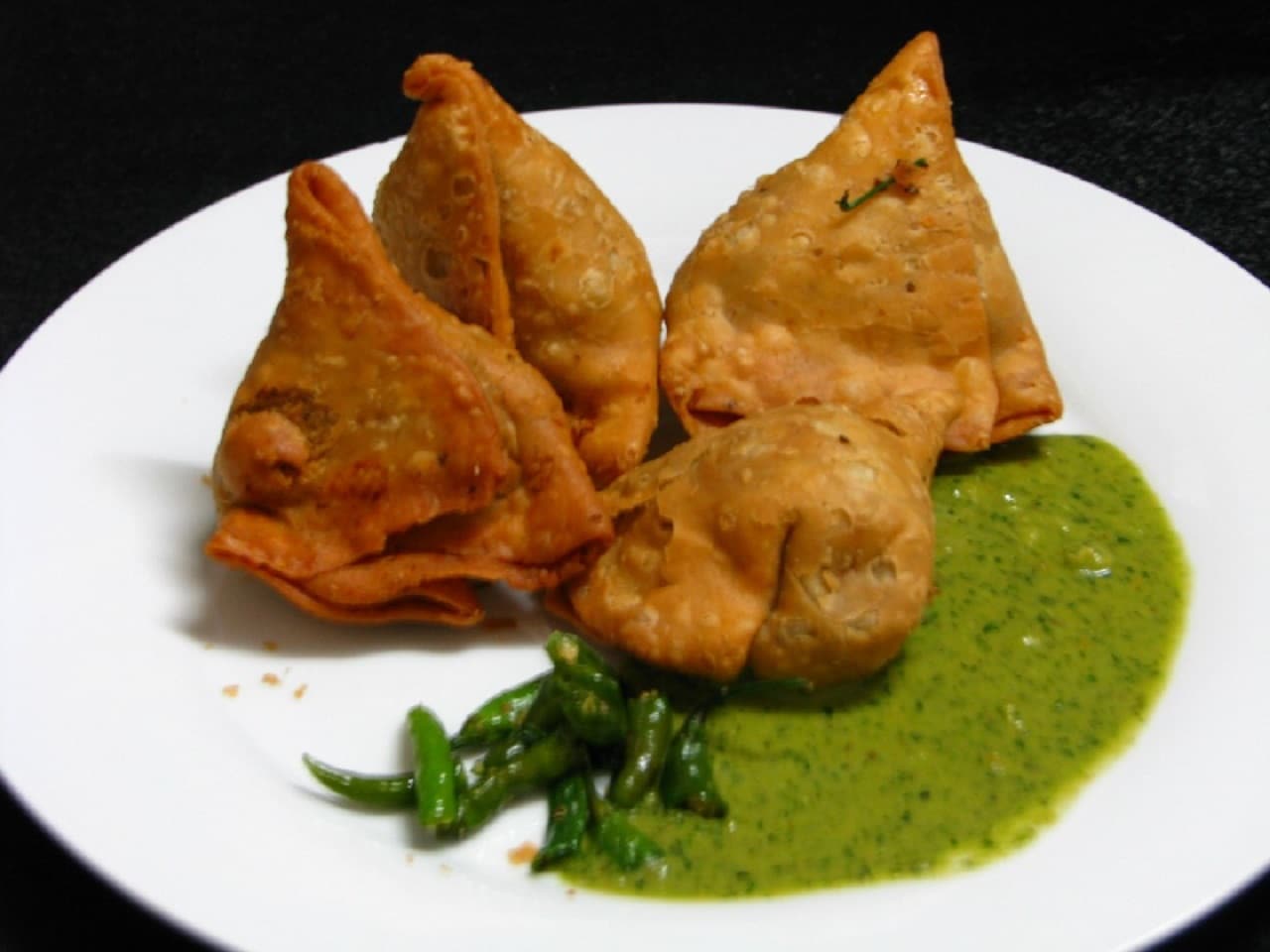
samosas
From, Indian-style lentils
The dal are lentil stews They vary according to the areas of India. However, in general all of them have this legume, preferably in its red form, and ginger, turmeric and garlic. They are served with rice and bread.
chapati, the quintessential Indian bread
Precisely, the most common Indian bread is chapati, which is made with a type of whole wheat flour and is shaped similar to one of our cakes. Depending on how it is prepared, it goes by different names. Thus, the naan It is made in an oven, generally glued to the walls of the oven. On the other hand the roast It is made on the grill and the pure fried. On the other hand, the paratha It is a bread stuffed with vegetables.
Rice island, a Mongolian influence on the history of Indian gastronomy
In India rice is made in a thousand different ways. But the most traditional is the so-called rice island o pilaf, made with vegetables, of course spices and Mongolian-style meats. This same influence means that fruits are also added to it.
Pollo tandoori, a classic
This dish is not only traditional in India, but it has also become a classic in Indian restaurants in the West. It can also be done in various ways, but it is, in its most basic version, marinated and spiced chicken which is made in the oven. In fact, its name comes from being cooked in ovens tandoori, made of clay.
samosa, a delicious starter
It is, perhaps, the best known dish of India in the rest of the world, similar to what happens with spring rolls in the Chinese gastronomy. The samosa is a stuffed dumpling of potatoes, peas, onion and spices. However, you can also find it with other vegetables or with chicken.
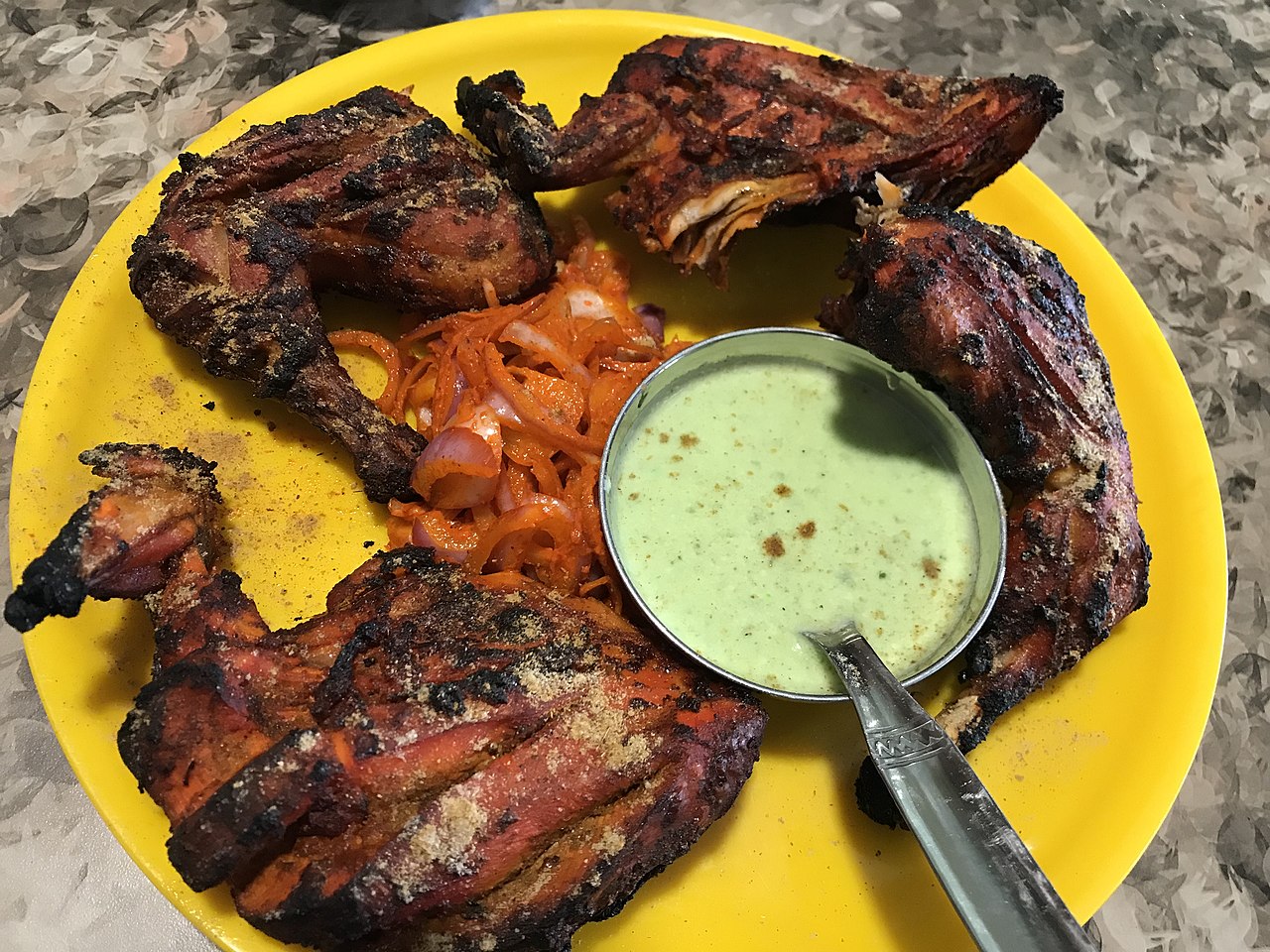
Tandoori chicken
Raita, a refreshing digestive
Basically, it is a yogurt combined with vegetables, especially cucumber, and aromatic herbs. However, there are also a thousand different elaborations in Hindu gastronomy.
Lassi, quintessential drink
Hindus drink a lot milk tea. But more typical still is the lassi, also made from liquid yogurt to which fruits such as banana, mango or papaya are added.
In conclusion, we have shown you a good part of the history of Indian gastronomy, as well as their manners at lunchtime and some of its most typical dishes. Now you just need to decide to try them. You will not regret it as they are delicious.